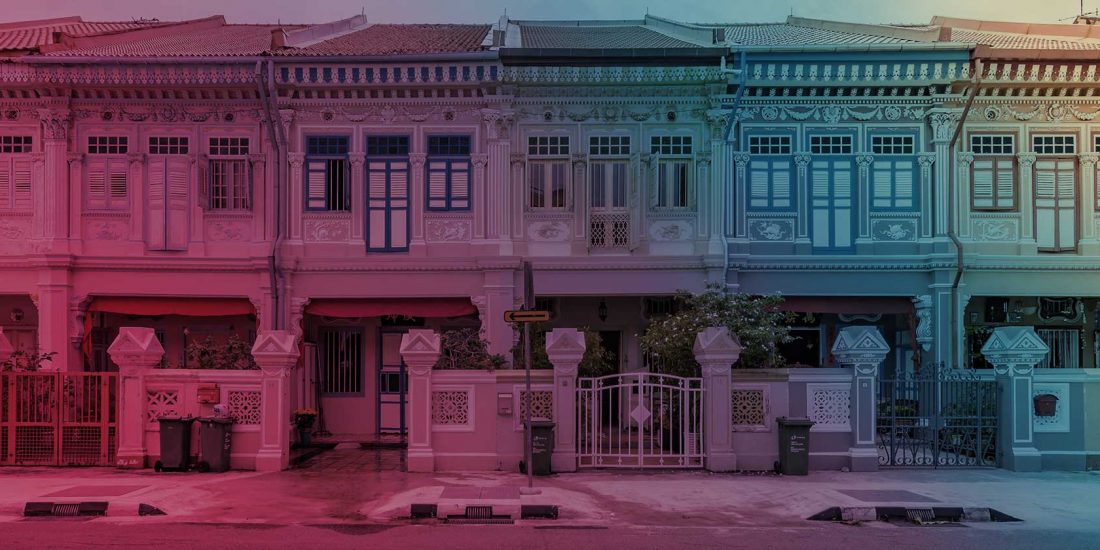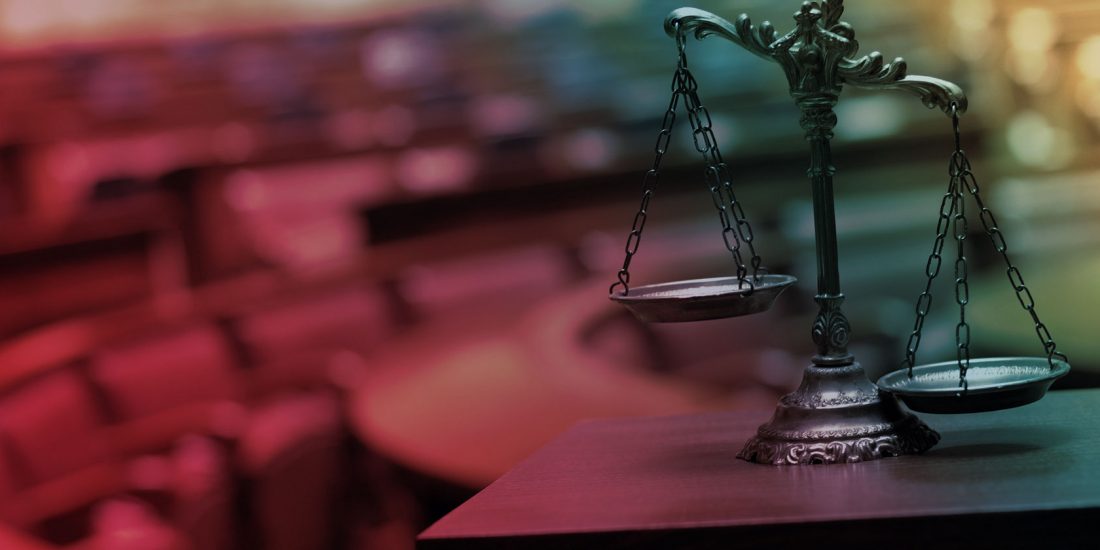
Wham Kwok Han Jolovan v Public Prosecutor [2020] SGCA 11
A Watershed Judgment for Article 14 Rights in Singapore?
To what extent is the Article 14 constitutional right to freedom of speech, assembly, and association protected in Singapore? On a practical level, how will a Court determine whether a law impermissibly derogates from said rights? This article fully explores the contours of the Court of Appeal decision in Wham Kwok Han Jolovan v Public Prosecutor [2020] SGCA 11 – which arguably answers the two preceding questions. Whilst lauding the judiciary’s commitment to protecting Article 14 rights, the article also poses a further two broad questions arising from the said decision.
Introduction
Article 14 of the Constitution of the Republic of Singapore (Cap 1, 1985 Rev Ed) (hereafter, Art 14 and the Constitution) has always provided for enshrined protection of “[f]reedom of speech, assembly and association.” These rights (hereafter referred to as the right to freedom of speech and expression) have been described as “fundamental”1Chee Siok Chin and others v Minister for Home Affairs and another (2006) 1 SLR(R) 582 at (42). and subject of various judicial decisions over the years, most recently by the Court of Appeal (CA) in Wham Kwok Han Jolovan v Public Prosecutor [2020] SGCA 11 (Wham Art 14).2Unless otherwise stipulated, references to any case paragraph numbers are references to Wham Art 14.
Nevertheless, the state of freedom of speech and/or expression in Singapore has been frequently derided. Our Republic is ranked 158 out of 180 countries on the 2020 World Press Freedom index.3https://rsf.org/en/ranking When activists are ostensibly prosecuted for merely expressing themselves or speaking out, the international media seizes upon such incidents to highlight purportedly draconian laws and standards Singapore maintains.4See for example this stinging rebuke by the New York times in respect of the arrest and prosecution of an activist for a ‘one man’ public assembly https://www.nytimes.com/2020/11/23/world/asia/singapore-smiley-face-protest-charges.html?referringSource=articleShare&fbclid=IwAR3IiT00gNKig06bMZJurqN2J1_h7euT_Mw2dPg1ceeZHjwynNrnX6B1KB0 This topic has become all the more controversial with the passing of legislation such as the Protection from Online Falsehoods and Manipulation Act 2019 (Act No. 26 of 2019)5Invariably, anti-establishment bodies allege that POFMA curtails and/or derogates from the right to free speech and expression, whilst the establishment deny such a claimhttps://www.straitstimes.com/politics/psp-members-post-remains-online-after-pofma-order-showing-rights-to-free-speech-not and increased scrutiny on false information published on social media platforms worldwide.6https://www.bbc.com/news/technology-52903680
In view of the above, it is therefore timely that the CA in Wham Art 14 provided a strong judgment affirming the commitment of the Courts in protecting the right to freedom of speech and expression, as well as arguably expanding protections of the same, by:
- Rejecting any “presumption of legislative constitutionality” (at [26]), affirming the role of the Judiciary as part of the “basic structure of the Westminster constitutional model,” and confirming that it would adopt an objective approach in determining whether any restriction on the right to freedom of speech and expression is unconstitutional (at [22]);
- Establishing a three-step framework to determine whether any law is an impermissible derogation from the said right ([29] – [32]); and
- Recognizing the need for a hitherto unexplored balancing exercise between competing interests in determining the above (at [33]).
Background to Wham Art 14
Wham Art 14 was a criminal reference on whether section 16(1)(a) of the Public Order Act (Cap 257A, 2012 Rev Ed) (POA) was a constitutionally valid derogation from Art 14(1).7Wham Art 14 at (1).
The Applicant had been charged and convicted for the offence of organising a public assembly without a permit, an offence under section 16(1)(a) of the POA. In gist, under the POA and its concomitant regulations, (a) one must first successfully apply for a permit before a public assembly can be held and (b) the Commissioner of Police regulates the grant of said permits pursuant to the licensing regime under the POA.8See s 7 of the POA generally.
Inter alia, the Applicant contended that the fact he was required to obtain a permit to assemble was an unconstitutional “curtailment … beyond that of a mere restriction”9Wham Art 14 at (12). of his right to peaceably assemble under Art 14(1)(b). The Applicant argued there was a difference between legislation restricting exercise of rights of freedom of expression versus legislation making rights exercisable only by permission, as was the case with requiring him to have a permit before publicly assembling. As noted by the CA, this was not an argument that was fully canvassed.10What Art 14 at (12).
The Law Pre-Wham Art 14
Art 14 states:
Freedom of speech, assembly and association
14.—(1) Subject to clauses (2) and (3) —
(a) every citizen of Singapore has the right to freedom of speech and expression;
(b) all citizens of Singapore have the right to assemble peaceably and without arms; and
(c) all citizens of Singapore have the right to form associations.
(2) Parliament may by law impose —
(a) on the rights conferred by clause (1)(a), such restrictions as it considers necessary or expedient in the interest of the security of Singapore or any part thereof, friendly relations with other countries, public order or morality and restrictions designed to protect the privileges of Parliament or to provide against contempt of court, defamation or incitement to any offence;
(b) on the right conferred by clause (1)(b), such restrictions as it considers necessary or expedient in the interest of the security of Singapore or any part thereof or public order; and
(c) on the right conferred by clause (1)(c), such restrictions as it considers necessary or expedient in the interest of the security of Singapore or any part thereof, public order or morality.
It is clear from the express wording of Art 14(1) that Singapore citizens enjoy the rights of freedom of speech and expression. However, it is also self-evident that the rights established in Art 14(1) are not untrammeled. Art 14(2) sets out legally permissible derogations “[p]arliament may by law impose.” As noted in Wham Art 14 at [21], “the inescapable conclusion arising from Art 14(2)(b) is that the right under Art 14(1)(b) is subject to a permitted list of restrictions.”
Whilst the above is uncontroversial, what remains is how the balance should be struck between these competing considerations and how should a Court determine whether a law impermissibly derogates from a citizen’s Art 14 rights.
Whilst earlier decisions pre-Wham Art 14 have always noted the need for a balance (see Jeyaretnam Joshua Benjamin v Lee Kuan Yew [1992] 1 SLR(R) 791 at [61]) as well as establishing that any derogation must be “necessary or expedient” for the purposes set out in Art 14(2), it is respectfully argued that, pre-Wham Art 14, the (so-called) balance was weighted in favour of upholding legislation.
Specifically, in Chee Siok Chin and others v Minister for Home Affairs and another [2006] 1 SLR(R) 582 (Chee Siok Chin), the High Court went so far as to state that whenever a law is challenged for being an unconstitutional derogation of Art 14(1), there is a “presumption of legislative constitutionality” which cannot be “lightly displaced” (at [49]).
In a separate context11Article 12 of the Constitution, in examining the legality of provisions under the Prevention of Corruption Act., the CA has similarly held that a Court “… ought, prima facie, to lean in favour of constitutionality and should support the legislation if it is possible to do so on any reasonable ground and it is for the party who attacks the validity of the legislation to place all materials before the court to show either the enactment or the exercise of the power under it is arbitrary and unsupportable” (PP v Taw Cheng Kong [1992] 2 SLR(R) 489 at [60]).
Respectfully, such a presumption is problematic. Whilst benefit of the doubt could be given in Chee Siok Chin that a presumption is a mere procedural starting point, the more sinister implication would be that any law passed by Parliament, even if derogating from Art 14(1), is good and constitutional pursuant to the powers vested in Parliament by Art 14(2) to make “restrictions.” Omnia praesumuntur rite esse acta (all things assumed to have been done rightly). This would mean a subjective approach is applied to examination of any law that might possibly impugn Art 14(1) – rendering any right “wholly toothless.”12Wham Art 14 at (22).
However, as recognized in Wham Art 14 at [26], citing Saravanan Chandaram v Public Prosecutor and another matter [2020] 2 SLR 95 at [154], “… relying on a presumption of constitutionality to meet an objection of unconstitutionality would entail presuming the very issue which is being challenged.” Such a presumption would constitute an implicit erosion of the powers of any competent Court – for it is within the province of the judiciary to determine whether ordinary executive and legislative acts are consistent with the Constitution – and be repugnant to the separation of powers, a feature of the Constitution’s basic structure (Mohammad Faizal bin Sabtu v PP [2012] 4 SLR 947 at [11]).
On a practical level, any presumption in favour of Parliament would suggest too that an Applicant would face an inexorably sisyphean task in proving an impugned law is unconstitutional. Instead of having the government justify any law it passes, it is the Applicant who must adduce evidence and arguments sufficient to even trigger any justification from the authority. The existence of a presumption would mean a Court should not determine the legality of any such law passed unless there are compelling reasons to do so.13For further discussion, see LEE, Jack Tsen-Ta. Rethinking the Presumption of Constitutionality. (2016). Constitutional Interpretation in Singapore: Theory and Practice. 139-158. Research Collection School Of Law and “All Power has Legal Limits”: The Principle of Legality as a Constitutional Principle of Judicial Review(2017) 29 SAcLJ 667.
Decision in Wham Art 14
The CA in Wham Art 14 unequivocally rejected adopting a subjective approach (wholly or partially) and endorsed an objective approach to determining the constitutionality of any law that might violate Art 14.
Crucially, the CA also rejected a presumption of constitutionality (at [26]) and made clear that “it is unequivocally for the judiciary to determine whether that derogation [of Art 14] falls within the relevant purpose” (at [28]). This leaves no doubt that Parliament is free to pass any laws it wishes but it is the Courts that shall determine whether such laws are in accordance with the Constitution.
The CA also answered the question of how it would determine if any law is an unlawful derogation from Art 14 by setting out the following three-step framework (the framework):
- Step 1: Does the legislation restrict the right to freedom of speech and expression in the first place (at [30])?
- Step 2: If the legislation restricts the said right, is such a restriction “necessary or expedient” (in the eyes of Parliament) for any of the purposes in Art 14(2)(b) (e.g. if section 16(1)(a) of the POA does restrict the right to freedom of expression, does Parliament believe it necessary or expedient for say, maintaining public order) (at [31])?
- Step 3: The Court will then analyse, whether on an objective standard, the restriction falls within the relevant and permitted purpose cited by determining if there is a nexus between the purpose of the legislation and one of the permitted purposes identified under Art 14(2)(b) (at [32]).
In addition to the framework, the CA endorsed what appears to be a balancing exercise between competing interests (at [33]). In this case, the right to peaceful assembly vis-à-vis the need for public order.
Application in Wham Art 14
Step 1
The CA found that it was “self-evident” that section 16(1)(a) of the POA, in requiring a permit to hold a public assembly, was a restriction on the right to peacefully assemble.
Such a holding in itself is uncontroversial. However, what was tantalizing was the (rejected) argument that section 16(1)(a) was not a mere restriction but a “more fundamental deprivation.” Without defining the same, the Court merely held that there was authority that licensing requirements (citing Chee Soon Juan v PP [2003] 2 SLR(R) 445) were mere restrictions (at [37]). Although this point was decided against the Applicant and was not canvassed fully, it was not rejected outright by the CA. The (untested) implication is that a future Court could strike down a law at Step 1 of the framework if it severely impinges upon an Art 14 right (i.e. if it were found to be a “fundamental deprivation”).
On the other hand, a finding that a law is not a “restriction” may also result in an Art 14 challenge being terminated. The CA cited section 15 of the Protection from Harassment Act (Cap 256A, 2015 Rev Ed) (POHA), as discussed in the minority opinion in AG v Ting Choon Meng and another appeal [2017] 1 SLR 373 at [111] (Ting), as “merely constrain[ing] the publication of speech…” – suggesting “it may be possible that the legislation does not restrict the constitutional right (at all) so as to trigger the second and third steps…” (at [30]).
Step 2
Parliament considered section 16(1)(a) of the POA “necessary or expedient” in the interest of public order, apparent by “its name” and the “long title” which disclosed the said Act was for inter alia “preserving public order” (at [39]). Such an intention was further gleaned from ministerial remarks in Parliament (at [40]).
Step 3
In determining whether there was a nexus between “public order” under Art 14(2)(b) and the POA, the CA considered the “general scheme” of the POA and relevant provisions in the said Act. It found that the Commissioner of Police must first have “reasonable ground[s]” for refusing a permit and that the said grounds “expressly pertain to considerations of public order”, viz. to prevent “undesirable results” of nuisance, feelings of enmity, hatred, ill-will, or hostility, obstruction, jeopardization of safety etc, therefore providing the “required nexus” (at [45] and [46]).
The CA was also careful to note the “careful balance” between the right to peaceably assembly and “delineation of the restriction imposed” (at [48]). It noted that (a) “all of the circumstances [where the Commissioner of Police could refuse a permit] listed are situations in which threats to the interests of public order or its maintenance could conceivably arise” and (b) more importantly, that the Commissioner nonetheless is “not obliged to refuse to grant an applicant a permit” even if such grounds existed.
Analysis of Wham Art 14
Wham Art 14 is a welcome decision which affirms the judiciary’s commitment to not only being a guardian of Art 14 rights but its role in “ensuring any exercise of state power is done within legal limits” (Tan Seet Eng v AG and another matter [2016] 1 SLR 779 at [1]).
Further, the provision of a framework for assessing an Art 14 challenge, clarifications on the (non-existence) of a presumption of constitutionality, as well as the general tone of the decision are all positive developments for our constitutional jurisprudence. At the same time, the decision is a measured one, insofar as the CA reiterated that Parliament still has the “primary decision-making power” since its opinion on whether a law is a “necessary or expedient” derogation from constitutional rights is an important consideration for the Court. Yet the Court will not allow unlawful derogations insofar as it will ascertain, objectively, whether any statute meets an enumerated ground of valid derogation from the constitutional right – rather than presuming it does, until otherwise proven (at [24]).
Whilst the decision brings much clarity, two broad questions remain:
- In determining Step 1 of the framework, what is the delineation between a “restriction”, a “fundamental deprivation”, and a law that “merely constrains?” If there are clear bright lines between the three, what justification can be provided for the suggestion that a law that merely constrains is insufficient to violate what are arguably, higher-order rights on freedom of speech and expression under Art 14 (at [30])?
Such nomenclature is unlikely to be mere semantics; the CA must have intended for such a distinction to be drawn. There was no need for the CA to highlight the example of section 15 of POHA and the observation in Ting that said provision merely “constrains the publication of speech that has proven to be false,” as opposed to being an impermissible inhibition of Art 14 rights. This was unnecessary to determine the criminal reference in Wham Art 14. Additionally, whatever observations from Ting were arguably obiter and were found in the minority decision.
Curiously, in respect of Step 1, the CA was highly careful in only noting that “it may be possible” (as opposed to using more determinative language) for a law not to violate Art 14, and therefore not engage Steps 2 and 3 of the framework.
There remains much scope for argument in respect of Step 1. However, what is key is that it appears the CA is willing to consider the degree to which a law interferes with the exercise of a fundamental right.
- (i) When and (ii) how exactly is the balancing exercise (at [33]) to be applied?
In respect of (i), it appears that the CA may have considered the need for a balance at Step 3 of the framework (at [48]). Respectfully, however, it our view that any balancing exercise should take place as an overarching determination and/or could be useful at other steps of the framework.
For example, at Step 2, if parliamentary debates are silent or do not clearly disclose an unequivocal view that a law is deemed “necessary or expedient” in service of a purpose listed under Art 14(2), a Court might be able to infer the absence of said belief if said law grossly interferes with the exercise of Art 14 rights with negligible benefits to the relevant interests identified. If the balance struck between the right and the public or societal interest – as embodied in statute – devalues the weight of the former to such an extent that no reasonable legislator could have arrived at it, then the Court might be well justified in concluding that Step 2 of the assessment was not satisfied by the Government.14The logical inference here draws upon that of a Wednesbury unreasonableness inquiry.
In respect of (ii), the CA cited three cases at [33] as examples where “achieving a balance … is not novel” [Ting Choon Meng, Chee Siok Chin, and Review Publishing Co Ltd v Lee Hsien Loong [2010] 1 SLR 52 (Review Publishing)]. Respectfully, the said balance sought to be achieved was arguably not struck in those cases, especially where Chee Siok Chin affirmed a presumption of constitutionality. Further, Review Publishing in obiter stated that “courts should be mindful of the extent to which they can decide whether constitutional free speech should prevail …” and that it is “Parliament which has the final say” (at [270]), albeit in the context of defamation.
If the balance in respect of freedom of speech and expression and the restrictions in Art 14(2) is to be struck on terms set out in the said judgments, arguably Wham Art 14 is not a step forward. However, a close reading of the decision at [33] suggests that the CA was merely highlighting that it is not uncommon for Courts to enter into a balancing exercise, without prescribing what said balance should be. It remains to be seen what content of any balancing exercise shall contain, and how such balancing shall be effected.
Conclusion
In the round, Wham Art 14 provides a carefully considered decision which will largely shape Art 14 jurisprudence for years to come. Whilst there remain unanswered questions, especially in relation to the content of any balancing exercise, it is undoubtedly clear that the (current) CA will not brook a judicial approach where it is presumed Parliament passes legislation that is in accordance with the Constitution and should not be subject to scrutiny.
Endnotes
| ↑1 | Chee Siok Chin and others v Minister for Home Affairs and another (2006) 1 SLR(R) 582 at (42). |
|---|---|
| ↑2 | Unless otherwise stipulated, references to any case paragraph numbers are references to Wham Art 14. |
| ↑3 | https://rsf.org/en/ranking |
| ↑4 | See for example this stinging rebuke by the New York times in respect of the arrest and prosecution of an activist for a ‘one man’ public assembly https://www.nytimes.com/2020/11/23/world/asia/singapore-smiley-face-protest-charges.html?referringSource=articleShare&fbclid=IwAR3IiT00gNKig06bMZJurqN2J1_h7euT_Mw2dPg1ceeZHjwynNrnX6B1KB0 |
| ↑5 | Invariably, anti-establishment bodies allege that POFMA curtails and/or derogates from the right to free speech and expression, whilst the establishment deny such a claimhttps://www.straitstimes.com/politics/psp-members-post-remains-online-after-pofma-order-showing-rights-to-free-speech-not |
| ↑6 | https://www.bbc.com/news/technology-52903680 |
| ↑7 | Wham Art 14 at (1). |
| ↑8 | See s 7 of the POA generally. |
| ↑9 | Wham Art 14 at (12). |
| ↑10 | What Art 14 at (12). |
| ↑11 | Article 12 of the Constitution, in examining the legality of provisions under the Prevention of Corruption Act. |
| ↑12 | Wham Art 14 at (22). |
| ↑13 | For further discussion, see LEE, Jack Tsen-Ta. Rethinking the Presumption of Constitutionality. (2016). Constitutional Interpretation in Singapore: Theory and Practice. 139-158. Research Collection School Of Law and “All Power has Legal Limits”: The Principle of Legality as a Constitutional Principle of Judicial Review(2017) 29 SAcLJ 667. |
| ↑14 | The logical inference here draws upon that of a Wednesbury unreasonableness inquiry. |





